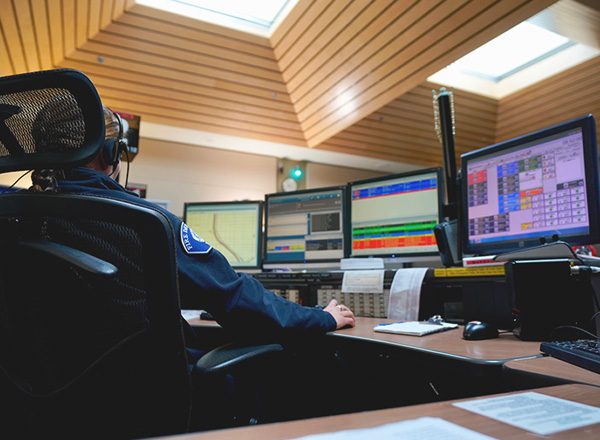A good communications center takes compliance with EMD protocols seriously—after all, they are the backbone of making sure you’re providing the right care. But a great communications center recognizes that compliance with protocols isn’t enough. Focusing merely on compliance could mean the difference between life and death for cardiac arrest victims. If you’re not measuring the quality of your care and the results of each call, it’s likely that some patients are dying needlessly. Even the most diligent agencies that follow their EMD protocols precisely could be missing key life-saving strategies when it comes to recognizing and responding to cardiac arrest calls. Let’s explore how you could be doing even more to help your telecommunicators improve their level of care, and ultimately eliminate preventable deaths from out-of-hospital cardiac arrest.
Quality Assurance Is Step One
Standards related to quality assurance (QA) and quality improvement (QI) programs vary greatly. Most accrediting bodies and professional standards dictate that agencies should have a quality assurance program in place to determine whether calls are handled according to established protocols. There’s also a growing list of states that recognize the value of bystander CPR and the ability of telecommunicators to coach callers through CPR. These states have therefore mandated the adoption of telecommunicator CPR (T-CPR) training for telecommunicators; but even so, many do not require quality assurance programs to ensure that training is leading to better performance and more lives saved.
Examining Quality Improvement
While quality assurance is critical to the process of evaluating cardiac arrest response, it’s only a piece of the quality improvement puzzle. Although the terms QA and QI are sometimes used interchangeably, they don’t mean the same thing. “Quality assurance is really just verifying that you're doing things right,” says Julie Buckingham, RQI T-CPR program director for RQI Partners and a former emergency telecommunicator and ECC quality improvement manager, “whereas quality improvement is looking for where you can improve.”
Many agencies are committed to what is referred to as “protocol compliance quality improvement,” which means they measure what was said by the telecommunicator, but not whether it had the intended impact in the quality of care delivered to the patient. With this protocol compliance QI, there’s generally a review of the telecommunicator’s ability to follow the scripted language in the EMD protocol. While very important, it’s not much different than quality assurance. This level of review is not measuring how effective the instruction is or whether the 911 caller is giving the right care to the patient based on what they are being told by the telecommunicator.
“When we talk about protocol compliance QI, what agencies are typically looking at is, ‘Did you follow your script correctly? Did you read that language as it is written or did you deviate from it, and if you deviated, to what degree did you deviate from it?’” says Buckingham.
Looking to the American Heart Association
What’s missing from this approach is measuring the actual quality of care being delivered to the patient. Poor-quality CPR is devastating to patient outcomes, and it’s a preventable harm. High-quality CPR is the primary component in influencing survival from cardiac arrest. Truly examining the quality of critical interventions delivered by the telecommunicator requires looking at several important factors that are critical to cardiac arrest survival, including those specified by the American Heart Association (AHA). As the experts on cardiac care, the AHA emphasized the importance of evaluating performance in its T-CPR policy statement, which recommends that all calls for EMS-confirmed cardiac arrest should be reviewed.1 It’s their stance that there’s no sicker patient in the system than a patient in cardiac arrest. It’s therefore imperative to evaluate these calls where a life is on the line to determine not just what happened on the call, but what can be improved upon to change an outcome in the future.
According to the AHA, some critical performance measures that must be evaluated include the percentage of cardiac arrest cases correctly identified by the telecommunications center, with a further breakdown of those that were recognizable and those where the patient received T-CPR. Other crucial measurements include the time it takes for the telecommunicator to recognize cardiac arrest and the time it takes to get to the first telecommunicator-directed compression.
Focusing on Results
That’s where a new approach to quality improvement can make the difference in saving lives. Taking quality improvement a step further and conducting cardiac arrest case review, which measures the quality of care delivered to the patient, demands reviewing each cardiac arrest case by listening to the recording and tracking specific metrics.
A cardiac arrest case review looks at both the quantitative and qualitative aspects of performance. Meeting accepted time standards for recognizing cardiac arrest and initiating CPR instructions are crucial—but so is a focus on the results of those actions, and on how to continuously improve and ensure performance remains excellent. What gives every cardiac arrest victim the greatest chance of survival is reviewing each call and asking the questions, “Could we have gotten to chest compressions even more quickly in this case, or improved the quality of resuscitation delivered, and how?”
An in-depth approach to quality improvement includes both systemic adjustments that lead to better performance as well as individualized feedback and training for telecommunicators that help them make better decisions on future calls. In some cases, what would help them most is an understanding of the science behind the actions they’re taking—why every second counts and how CPR quality really does improve survival. In other cases, what is needed is a discussion about coaching callers to provide high-quality CPR. Giving telecommunicators this information empowers them and reminds them that they play an active role in the delivery of patient care and are a vital link in the chain of survival.
Want more information? Download our guide to implementing, assessing and improving T-CPR programs









